| |||||
| Decades: | |||||
|---|---|---|---|---|---|
| See also: | Other events of 1828 Years in Iran | ||||
The following lists events that have happened in 1828 in the Sublime State of Persia.
| |||||
| Decades: | |||||
|---|---|---|---|---|---|
| See also: | Other events of 1828 Years in Iran | ||||
The following lists events that have happened in 1828 in the Sublime State of Persia.

Prince of Persia is a 1989 cinematic platform game developed and published by Broderbund for the Apple II. It was designed and implemented by Jordan Mechner. Taking place in medieval Persia, players control an unnamed protagonist who must venture through a series of dungeons to defeat the evil Grand Vizier Jaffar and save an imprisoned princess.
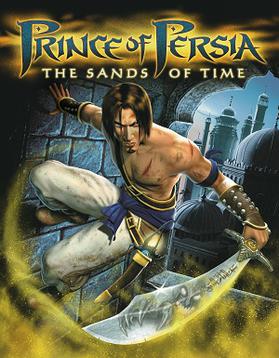
Prince of Persia: The Sands of Time is a 2003 action-adventure game developed by Ubisoft Montreal and published by Ubisoft. The game was released on the Game Boy Advance, PlayStation 2, GameCube, Xbox and Windows in November 2003. The Sands of Time is a reboot of the Prince of Persia series created by Jordan Mechner. Mechner served as creative consultant, designer, and scenario writer for The Sands of Time.
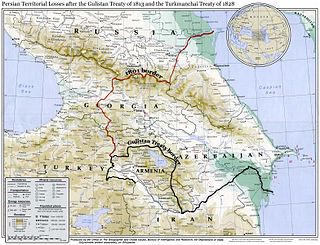
The Treaty of Gulistan was a peace treaty concluded between the Russian Empire and Qajar Iran on 24 October 1813 in the village of Gulistan as a result of the first full-scale Russo-Persian War. The peace negotiations were precipitated by the successful storming of Lankaran by General Pyotr Kotlyarevsky on 1 January 1813. It was the first of a series of treaties signed between Qajar Iran and Imperial Russia that forced Persia to cede the territories that formerly were part of Iran.
Persian may refer to:
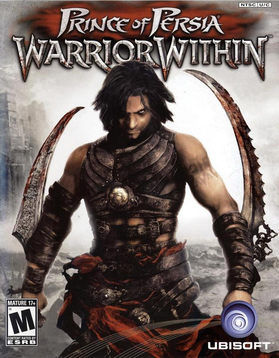
Prince of Persia: Warrior Within is a 2004 action-adventure game developed and published by Ubisoft for GameCube, Microsoft Windows, PlayStation 2, and Xbox. Released on December 2, 2004, it is the fifth main installment in the Prince of Persia series and the sequel to 2003's Prince of Persia: The Sands of Time. A port for the PlayStation Portable developed by Pipeworks Software, titled Prince of Persia: Revelations, was released on December 6, 2005. Two mobile versions of Warrior Within were published by Gameloft for the cell phone and iOS in 2004 and 2010, respectively. Due to issues with the in-game menu, the iOS version was pulled from the App Store for two weeks, being re-released on June 18, 2010.

The Treaty of Finckenstein, often spelled Finkenstein, was a treaty concluded between France and Iran (Persia) in the Finckenstein Palace on 4 May 1807 and formalised the Franco-Persian alliance.

The Muslim conquest of Persia, also called the Muslim conquest of Iran, the Arab conquest of Persia, or the Arab conquest of Iran, was a major military campaign undertaken by the Rashidun Caliphate between 632 and 654. As part of the early Muslim conquests, which had begun under Muhammad in 622, it led to the fall of the Sasanian Empire and the eventual decline of Zoroastrianism, which had been predominant throughout Persia as the nation's official religion. The persecution of Zoroastrians by the early Muslims during and after this conflict prompted many of them to flee eastward to India, where they were granted refuge by various kings.

The Treaty of Turkmenchay was an agreement between Qajar Iran and the Russian Empire, which concluded the Russo-Persian War (1826–1828). It was second of the series of treaties signed between Qajar Iran and Imperial Russia that forced Persia to cede or recognize Russian influence over the territories that formerly were part of Iran.

Greater Khorasan is a historical eastern region in the Iranian Plateau in West and Central Asia that encompasses western and northern Afghanistan, northeastern Iran, the eastern halves of Turkmenistan and Uzbekistan, western Tajikistan, and portions of Kyrgyzstan and Kazakhstan.

Historically, Iran was commonly referred to as "Persia" in the Western world. Likewise, the modern-day ethnonym "Persian" was typically used as a demonym for all Iranian nationals, regardless of whether or not they were ethnic Persians. This terminology prevailed until 1935, when, during an international gathering for Nowruz, the Iranian king Reza Shah Pahlavi officially requested that foreign delegates begin using the endonym "Iran" in formal correspondence. Subsequently, "Iran" and "Iranian" were standardized as the terms referring to the country and its citizens, respectively. Later, in 1959, Pahlavi's son Mohammad Reza Pahlavi announced that it was appropriate to use both "Persia" and "Iran" in formal correspondence. However, the issue is still debated among Iranians. A variety of scholars from the Middle Ages, such as the Iranian polymath Al-Biruni, also used terms like "Xuniras" to refer to Iran: "which is the center of the world, [...] and it is the one wherein we are, and the kings called it the Iranian realm."

The Hotak dynasty was an Afghan monarchy founded by Ghilji Pashtuns that briefly ruled portions of Iran and Afghanistan during the 1720s. It was established in April 1709 by Mirwais Hotak, who led a successful rebellion against the declining Persian Safavid empire in the region of Loy Kandahar in what is now southern Afghanistan.
The Russo-Persian Wars or Russo-Iranian Wars were a series of conflicts between 1651 and 1828, concerning Persia and the Russian Empire. Russia and Persia fought these wars over disputed governance of territories and countries in the Caucasus. The main territories disputed were Aran, Georgia and Armenia, as well as much of Dagestan – generally referred to as Transcaucasia – and considered part of the Safavid Iran prior to the Russo-Persian Wars. Over the course of the five Russo-Persian Wars, the governance of these regions transferred between the two empires. Between the Second and Third Russo-Persian Wars, there was an interbellum period in which a number of treaties were drawn up between the Russian and the Persian Empires, as well as between both parties and the Ottoman Empire. Ottoman interest in these territories further complicated the wars, with both sides forming alliances with the Ottoman Empire at different points throughout the wars. Following the Treaty of Turkmenchay, which concluded the Fifth Russo-Persian War, Persia ceded much of its Transcaucasian territory to the Russian Empire.
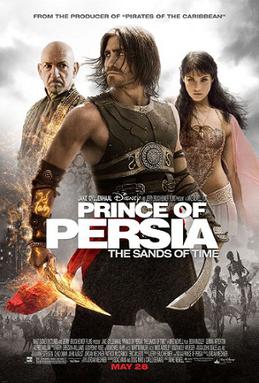
Prince of Persia: The Sands of Time is a 2010 American action fantasy film directed by Mike Newell from a screenplay by Boaz Yakin, Doug Miro, and Carlo Bernard, based on the video game series Prince of Persia created by Jordan Mechner. The film stars Jake Gyllenhaal, Ben Kingsley, Gemma Arterton, and Alfred Molina. It is an adaptation of the 2003 video game of the same name published by Ubisoft. Elements from its sequels Warrior Within and The Two Thrones are also incorporated.
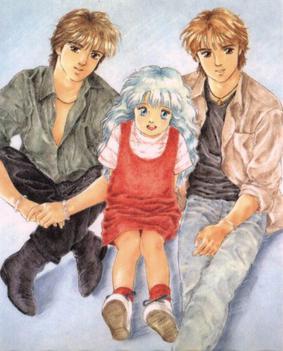
Persia, the Magic Fairy is a magical girl anime television series produced by Studio Pierrot which aired on Nippon Television from July 1984 to May 1985. It is an adaptation of the manga series by Takako Aonuma titled Persia ga Suki!. In addition to the TV series, two OVAs were released, and the main character, Persia, also appeared in two other Studio Pierrot special presentations. This was the second of five magical girl anime to be created by Studio Pierrot, and featured the character designs of Yoshiyuki Kishi, who did the character designs for Pierrot's next magical girl series Magical Emi, the Magic Star, is also credited as the series's character designer and animation director.

The Persian campaign or invasion of Iran was a series of military conflicts between the Ottoman Empire, British Empire and Russian Empire in various areas of what was then neutral Qajar Iran, beginning in December 1914 and ending with the Armistice of Mudros on 30 October 1918, as part of the Middle Eastern Theatre of World War I. The fighting also involved local Persian units, who fought against the Entente and Ottoman forces in Iran. The conflict proved to be a devastating experience for Persia. Over 2 million Persian civilians died in the conflict, mostly due to the Armenian genocide by the Ottoman regime and Persian famine of 1917–1919, influenced by British and Russian actions. The Qajar government's inability to maintain the country's sovereignty during and immediately after the First World War led to a coup d'état in 1921 and Reza Shah's establishment of the Pahlavi dynasty.
Prince of Persia is a video game franchise created by Jordan Mechner. It is centered around a series of action-adventure games focused on various incarnations of the eponymous Prince, set in ancient and medieval Persia.
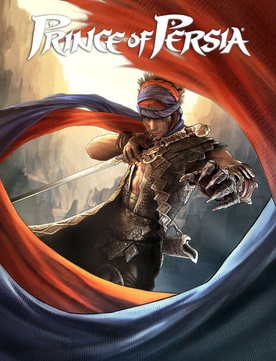
Prince of Persia is a 2008 action-adventure game developed by Ubisoft Montreal and published by Ubisoft. It is the seventh main installment in the Prince of Persia franchise, and the second reboot, establishing a new continuity that is separate from other games in the series. It was released in the United States on December 2, 2008, for PlayStation 3 and Xbox 360, and on December 9 for Windows. It was released on March 24, 2009, for Mac OS X via the Cider engine. The game was also released on November 11, 2008, by Gameloft for mobile phones that runs on the Java platform taking place in a 2D environment, and has a feature of enabling the players to control a second character at certain points of levels.

Lego Prince of Persia was a Lego theme based on the 2010 film Prince of Persia: The Sands of Time. It was licensed from Walt Disney Pictures, Jerry Bruckheimer Films, and Ubisoft. The theme was introduced in 2010 and was discontinued by the end of 2011.

The Achaemenid Empire or Achaemenian Empire, also known as the Persian Empire or First Persian Empire, was an Iranian empire founded by Cyrus the Great of the Achaemenid dynasty in 550 BC. Based in modern-day Iran, it was the largest empire by that point in history, spanning a total of 5.5 million square kilometres. The empire spanned from the Balkans and Egypt in the west, most of West Asia, the majority of Central Asia to the northeast, and the Indus Valley to the southeast.